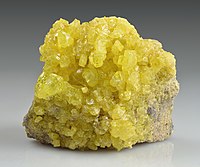
Preclinical efficacy and toxicity studies of a highly specific chimeric anti‐CD47 antibody
Sign Up to like & getrecommendations! Published in 2021 at "FEBS Open Bio"
DOI: 10.1002/2211-5463.13084
Abstract: Cluster of differentiation 47 (CD47) is a widely expressed self‐protection transmembrane protein that functions as a critical negative regulator to induce macrophage‐mediated phagocytosis. Overexpression of CD47 enables cancer cells to escape immune surveillance and destruction… read more here.
Keywords: cd47 antibody; cd47; antibody; anti cd47 ... See more keywords

Analysis of proportional data in reproductive and developmental toxicity studies: Comparison of sensitivities of logit transformation, arcsine square root transformation, and nonparametric analysis
Sign Up to like & getrecommendations! Published in 2020 at "Birth Defects Research"
DOI: 10.1002/bdr2.1755
Abstract: In developmental and reproductive toxicity studies, analysis of litter‐based binary endpoints (e.g., incidence of malformed fetuses) is complex in that littermates often are not entirely independent of one another. It is well established that the… read more here.
Keywords: arcsine square; square root; analysis; transformation ... See more keywords

The inadequacies of pre‐market chemical risk assessment's toxicity studies—the implications
Sign Up to like & getrecommendations! Published in 2017 at "Journal of Applied Toxicology"
DOI: 10.1002/jat.3396
Abstract: Industry provides essentially all the data for most (pre‐market) chemical risk assessments (RA); academics study a chemical once it is marketed. For two randomly‐chosen high production chemicals, despite new European Union mandates to evaluate all… read more here.
Keywords: chemical risk; market; pre market; market chemical ... See more keywords

Overview and Comparison of Intestinal Organotypic Models, Intestinal Cells, and Intestinal Explants Used for Toxicity Studies.
Sign Up to like & getrecommendations! Published in 2018 at "Current topics in microbiology and immunology"
DOI: 10.1007/82_2018_142
Abstract: The intestine is a complex organ formed of different types of cell distributed in different layers of tissue. To minimize animal experiments, for decades, researchers have been trying to develop in vitro/ex vivo systems able… read more here.
Keywords: overview comparison; toxicity; organotypic models; toxicity studies ... See more keywords

Bioaccumulation and toxicity studies of macroalgae (Charophyceae) treated with aluminium: Experimental studies in the context of lake restoration.
Sign Up to like & getrecommendations! Published in 2017 at "Ecotoxicology and environmental safety"
DOI: 10.1016/j.ecoenv.2017.07.056
Abstract: The objective of this study was to examine the impact of aluminium on the perennial macroalgae Chara hispida L. and its bioaccumulation capacities. Aluminium (Al) was introduced into the environment in the form of polyaluminium… read more here.
Keywords: studies macroalgae; bioaccumulation; aluminium; restoration ... See more keywords

Effect of supercritical incorporation of cinnamaldehyde on physical-chemical properties, disintegration and toxicity studies of PLA/lignin nanocomposites.
Sign Up to like & getrecommendations! Published in 2020 at "International journal of biological macromolecules"
DOI: 10.1016/j.ijbiomac.2020.11.140
Abstract: Poly (lactic acid)/lignin nanocomposites (PLA/Lig-Np) containing cinnamaldehyde (Ci) were obtained by a combination of melt extrusion and supercritical impregnation process. In this work, Ci impregnation tests were carried out in a high-pressure cell at 40 °C… read more here.
Keywords: cinnamaldehyde; toxicity; effect; incorporation ... See more keywords

Toxicity studies of elemental sulfur in marine sediments
Sign Up to like & getrecommendations! Published in 2017 at "International Journal of Sediment Research"
DOI: 10.1016/j.ijsrc.2017.12.004
Abstract: Abstract Elemental sulfur (ES) is a component essential for proper development of animals, but it can be toxic for aquatic organisms. The objectives of the study reported here included determination of ES concentrations in sediment… read more here.
Keywords: studies elemental; sediment; area; toxicity ... See more keywords

Ecotoxicological assessment of micropollutant Diclofenac biosorption on magnetic sawdust: Phyto, Microbial and Fish toxicity studies.
Sign Up to like & getrecommendations! Published in 2020 at "Journal of hazardous materials"
DOI: 10.1016/j.jhazmat.2020.123532
Abstract: Diclofenac (DCF), a persistent pharmaceutical micropollutant which occurs in the ecosystems causing adverse effects on aquatic as well as terrestrial organisms. In this study, magnetic sawdust (MSD) was prepared using co-precipitation method for biosorptive removal… read more here.
Keywords: magnetic sawdust; diclofenac; micropollutant; biosorption ... See more keywords

Acute and subchronic toxicity studies of methanol extract of Polygonum minus leaves in Sprague Dawley rats
Sign Up to like & getrecommendations! Published in 2017 at "Regulatory Toxicology and Pharmacology"
DOI: 10.1016/j.yrtph.2017.02.005
Abstract: &NA; Medicinal plant preparations may contain high levels of toxic chemical constituents to potentially cause serious harm to animals and/or humans. Thus, toxicity studies are important to assess the toxic effects of plant derived products.… read more here.
Keywords: methanol extract; toxicity; subchronic toxicity; minus ... See more keywords

Issues currently complicating the risk assessment of synthetic amorphous silica (SAS) nanoparticles after oral exposure
Sign Up to like & getrecommendations! Published in 2021 at "Nanotoxicology"
DOI: 10.1080/17435390.2021.1931724
Abstract: Abstract Synthetic amorphous silica (SAS) is applied in food products as food additive E 551. It consists of constituent amorphous silicon dioxide (SiO2) nanoparticles that form aggregates and agglomerates. We reviewed recent oral toxicity studies… read more here.
Keywords: risk assessment; toxicity studies; sas;

Permitted Daily Exposure of the Androgen Receptor Antagonist Flutamide
Sign Up to like & getrecommendations! Published in 2017 at "Toxicological Sciences"
DOI: 10.1093/toxsci/kfx135
Abstract: This report aims to determine the permitted daily exposure (PDE) of flutamide, an androgen receptor blocker, as directed by guideline EMA/CHMP/CVPM/SWP/169430/2012 that came into effect on June 2015. A literature review was conducted to identify… read more here.
Keywords: pde; daily exposure; androgen receptor; permitted daily ... See more keywords